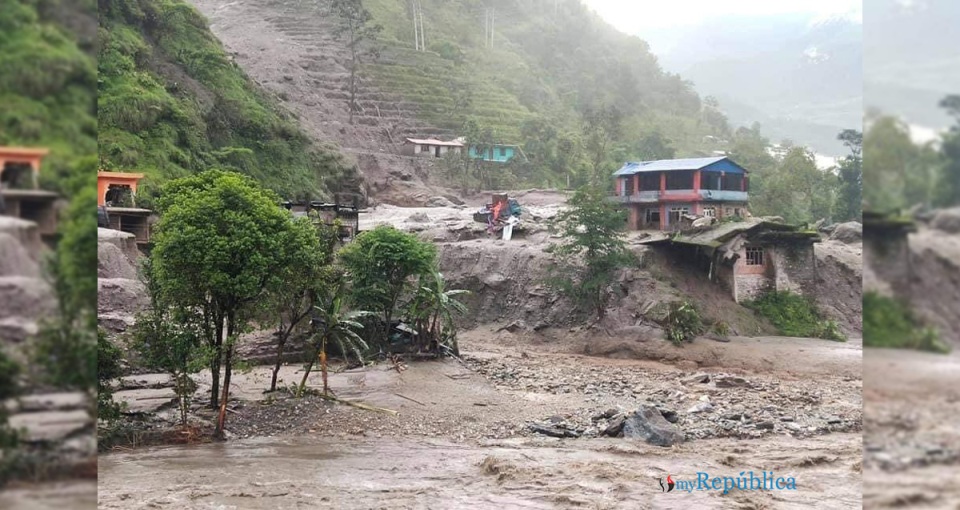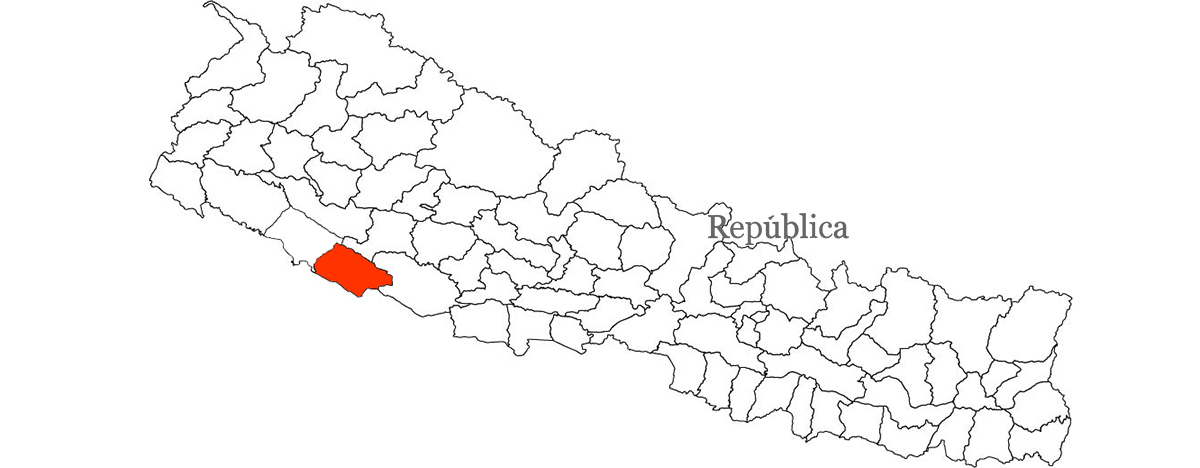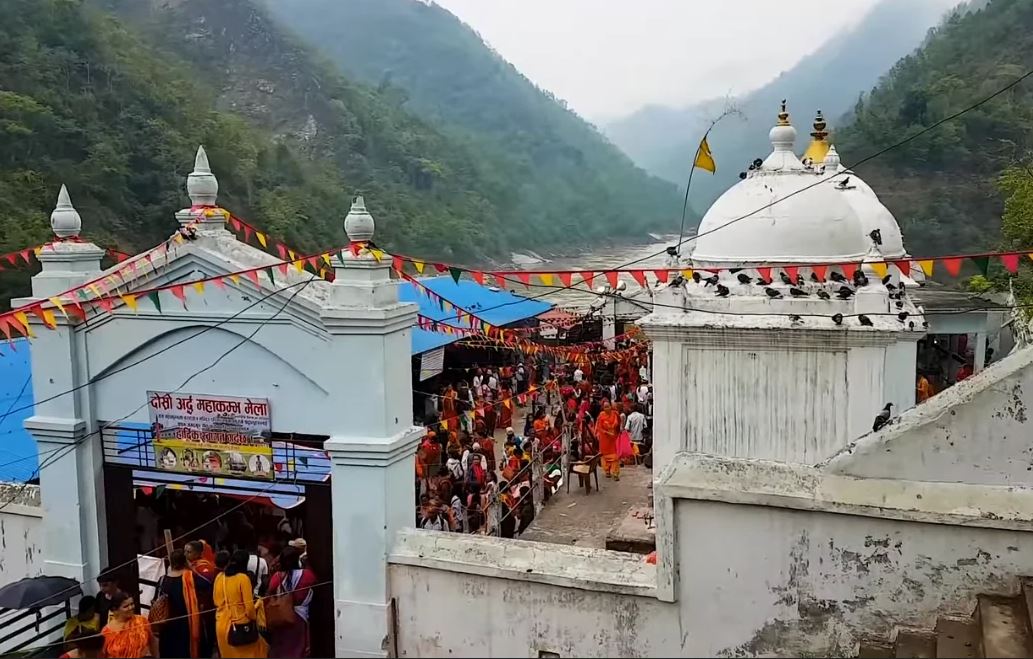
OR

Nepal and India should implement international disaster laws to reduce vulnerability and foster sustainable development.
It's an undeniable fact that no country, however powerful or developed, has been able to develop total protection mechanism against disasters. The natural calamities like earthquakes, hurricanes, volcanic eruptions, epidemic, flood, or snowfall have been claiming the lives across the world. Still, a state can adopt every possible measure to minimize the loss. But international cooperation, coordination and collaboration is crucial in disaster risk reduction and management.
The success of disaster-management could depend considerably on efficiency of domestic laws. The aims and objectives of domestic laws relating to disaster management are usually in line with international commitment and guidelines. Expressing solidarity with international commitments, India and Nepal have actively participated in scores of international disaster risk reduction and management activities.
Yokohama Strategy (1994) is the first world conference on natural disasters held from May 23 to 27, 1994. It adopted the Yokohama Strategy for a safer world. The UN General Assembly in 1994 endorsed guidelines for Natural Disaster Prevention, Preparedness and Mitigation and its Plan of Action. It was the outcome of the mid-term review of the International Decade of Natural Disaster Reduction (IDNDR) and established 10 principles for its strategy, a plan of action and a follow-up. The principles chiefly provide guidelines for natural disaster prevention and preparedness. These guidelines include risk assessment, disaster prevention and preparedness, dissemination of information relating to early warnings of impending disaster, sustainable development, environmental protection, poverty alleviation and strong political determination.
Undoubtedly, the disaster or epidemic law regime emboldens the people if the state adopts legal measures to minimize the risks caused by pandemic/disaster-like situations. Sustainable development and poverty alleviation with strong political commitment could act as catalyst for crisis preparedness and risk reduction mechanisms.
Disaster prevention, mitigation, preparedness and relief are four elements which contribute to and gain from the implementation of sustainable development policies. These elements, along with environmental protection and sustainable development, are closely interrelated. Therefore, nations should incorporate them in their development plans and ensure efficient follow-up measures at the community, national, sub-regional, and international levels.
Reducing risks
Sustainable economic growth and sustainable development cannot be achieved without adequate measures to reduce disaster losses. The Rio Declarationstresses the need for the international community to assist states afflicted by natural disasters and other emergencies that are likely to produce sudden harmful effects in the environment of those states.
However, the lockdown, closure of vehicular movement and industries or other preventive measures to contain the spread of deadly virus has caused a positive impact on the environment. But lockdown is the last resort the states should take to prevent the spread of transmission.
Nepal has National Action Plan on Disaster Management (1996) which incorporates disaster management cycle and Yokohama Strategy.
The second world conference—Hyogo Framework of Action (HFA) (2005-2015)—on disaster risk reduction was held in Kobe, Hyogo, Japan from 18 to 22 January 2005. National Position Paper on Disaster Risk Reduction and Management Nepal (2018) published by the government of Nepal says that the HFA hasendorsed the goals and five priorities for action between 2005 and 2015. Integration of disaster risk reduction into sustainable development, strengthening of institutions to build resilience to hazards and emergency preparedness, and response and recovery programs are major goals of HFA.
Simply put, the framework incorporates the strategic goals and priority areas regarding the integration of disaster risk reduction into sustainable development policies, capacity building, preparedness and vulnerability reduction.
The Sendai Framework for Disaster Risk Reduction (SFDRR)2015-2030 was adopted in Sendai, Japan, on March 18, 2015. India and Nepal are signatoriesto the Sendai Framework for Disaster Risk Reduction, which was adopted during the third UN World Conference on Disaster Risk Reduction in March 2015 to work towards reducing loss of lives and assets from disasters.
The SFDRR’s four priorities for action are intended to be achieved by 2030. These priorities include understanding disaster risk, strengthening disaster risk governance to manage disaster risk, investing in disaster risk reduction for resilience and enhancing disaster preparedness for effective response and to “Build Back Better” in recovery, rehabilitation and reconstruction.
Responsibility of the state
While the COVID-19 outbreak and its deadly impacts are on the rise, the states could adopt a unanimous disaster/pandemic risk governance system that enables disaster preparedness and risk reduction mechanisms. Moreover, there should be laws in place to guarantee fair compensation to the vulnerable citizens and business enterprises. After all, a welfare state cannot behave like a silent spectator at a time when its natural or juristic persons are suffering from crisis or health emergency-like situations.
The SFDRR aims to substantially reduce global disaster mortality by 2030, substantially reduce the number of affected people globally by 2030, substantially reduce disaster damage to critical infrastructure and disruption of basic services, substantially enhance international cooperation to developing countries through adequate and sustainable support to complement their national actions for implementation of the present Framework by 2030 and substantially increase the availability of and access to multi-hazard early warning systems, among other things.
All these goals aim to achieve sustainable development and sustainable future. Nepal deserves international cooperation to expedite the fight against Covid-19. We don't have to become the victims of the pandemic that supposedly started in the developed world.
In 2016, India released the country’s first ever National Disaster Management Plan, a document based on the global blueprint for reducing disaster losses, the Sendai Framework for Disaster Risk Reduction. The government of Nepal too has prepared Disaster Risk Reduction National Strategic Action Plan (NSAP) (2018-2030) in pursuance of the four priorities of the SFDRR.
Likewise, the sustainable development goals, the Global Platform 2017, Paris Agreement on Climate Change, Addis Ababa Action Agenda (AAAA), Asian Ministerial Conference on Disaster Risk Reduction (AMCDRR) 2016, and Asian Ministerial Conference on Disaster Risk Reduction (AMCDRR) 2018 all reaffirm the commitment for adopting measures to control the disaster.
Nepal has prepared and implemented a fifteen-year Sustainable Development Agenda with priority on disaster risk management (DRM). In India, NITI Aayog has been assigned the role of overseeing the implementation of SDGs. National Disaster Management Plan prepared by the government of India also seeks to give effect to SDGs.
Thus both India and Nepal have expressed stellar commitment to fight the disasters at national as well as international levels. Both the countries have formulated adequate laws in line with the international obligation too. What they need is to consolidate efforts in disaster risk reduction as the state has an obligatory legal mandate to address the human needs during the disaster or health emergency-like situations.
Jeremy Bentham, scholar of utilitarianism, says the end of legislation is the "greatest happiness of the greatest number." This is something Nepal and India need to care about.
The author, formerly a Lecturer of Law at Kathmandu University School of Law, is currently Judicial Officer with Birgunj High Court
You May Like This

IG Singh directs subordinate bodies to remain standby for potential disasters
KATHMANDU, August 3: Inspector General (IG) of Nepal Police, Dhiraj Pratap Singh has directed the subordinate bodies to identify areas... Read More...

Double whammy: COVID-19 and natural disasters
As the festive season starts in our country, a very serious humanitarian crisis stares us all in our faces. And... Read More...

Are we prepared?
Humanity is under a constant threat of calamity even though humans think that they are the most intellectual beings on... Read More...






Just In
- 265 cottage and small industries shut down in Banke
- NEPSE lost 53.16 points, while investors lost Rs 85 billion from shares trading last week
- Rainbow tourism int'l conference kicks off
- Over 200,000 devotees throng Maha Kumbha Mela at Barahakshetra
- Indians vote in the first phase of the world’s largest election as Modi seeks a third term
- Kushal Dixit selected for London Marathon
- Nepal faces Hong Kong today for ACC Emerging Teams Asia Cup
- 286 new industries registered in Nepal in first nine months of current FY, attracting Rs 165 billion investment






_20220508065243.jpg)






Leave A Comment